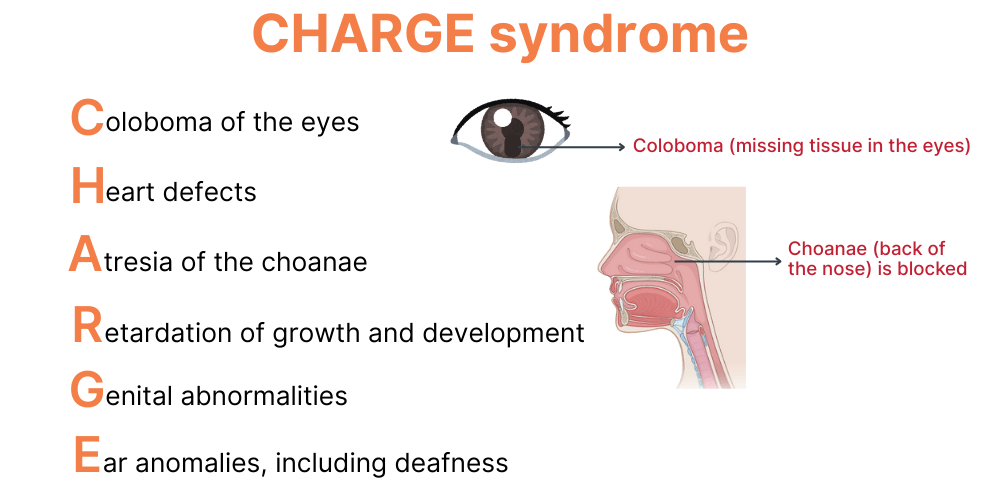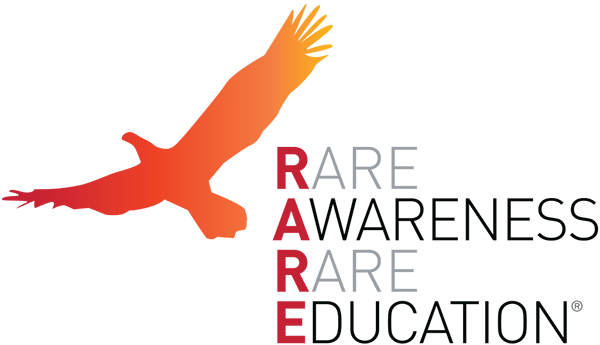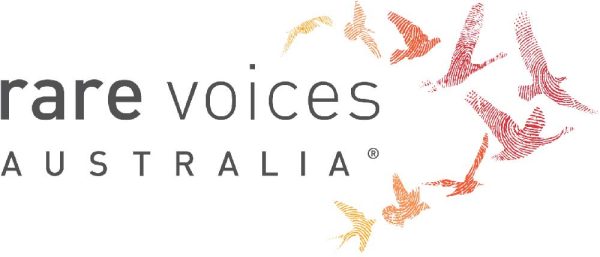CHARGE syndrome
Quick Search
- Summary
- Synonyms and Classifications
- Symptoms
- Disability Impacts
- Cause and Inheritance
- Diagnosis
- Treatment
- Clinical Care Team
- Clinical Care Guidelines
- Emergency Management
- Research
- Rare Disease Organisation(s)
- Lived Experience
- Support Services and Resources
- Mental Health
- Other Information
- Useful Links for Healthcare Professionals
Summary
CHARGE syndrome is a genetic condition that affects multiple body systems (multisystem condition) and is present from birth (congenital).1 There are a variety of major and minor characteristics. The major characteristics include coloboma of the eye (where there is missing tissue in the eye), heart defects, atresia of the choanae (birth defect where the back of the nose is blocked), delayed growth, abnormalities of the genitals and issues with the ear and hearing. The minor characteristics include delays in motor development, a cleft lip and/or palate, low muscle tone (hypotonia) in the upper body.1-3 Some individual may experience seizures as well.
CHARGE is used as an acronym to describe some of the major and minor features. The acronym does not include all the features, and the symptoms vary between individuals.
CHARGE syndrome is caused by genetic changes (variants) in the CHD7 gene.1-4 These genetic variants can typically occur randomly (de novo) before birth or can be inherited in rare cases. Both males and females can have a diagnosis of CHARGE syndrome.

Synonyms and Classifications
Synonyms: CHARGE association; Coloboma-heart defects-atresia choanae-retardation of growth and development-genitourinary problems-ear abnormalities syndrome; Hall-Hittner syndrome
Universal rare disease classifications provide a common language for recording, reporting and monitoring diseases. Please visit the Rare Disease Classifications page for more information about these internationally recognised classifications.
Symptoms
Major features of CHARGE Syndrome include, but are not limited to, the following:2,5
- Coloboma of the eye (ocular coloboma) – an eye condition where the eye has not formed properly causing missing tissue in a part of the eye, such as the iris, retina or eye nerve. This can lead to light sensitivity, vision issues and risk of the retina (light sensitive layer at the back of the eye) pulling away (retinal detachment).
- Impairment of the cranial nerves, which transmits information between the brain and key sensory organs like the eyes, ears, nose and tongue. This leads to a variety of sensory defects depending on which cranial nerve is affected, including:
- Hearing loss (Cranial nerve VIII)
- Reduced or absent sense of smell (Cranial nerve I)
- Problems with swallowing and digestive and constipation issues (Cranial nerve IX/X)
- Differences or unevenness of face symmetry (facial asymmetry) and lack of facial expression (Cranial nerve VII)
- Choanal atresia – obstruction of the choanae, which are passages from the back of the nose to the throat. This causes difficulties breathing through the nose and may also interfere with feeding.
- Ear anomalies that may lead to hearing loss (mild to profound), and balance issues
Some minor features include heart defects, cognitive issues, delayed motor skills, a decrease in muscle tone (hypotonia), a cleft lip, genital defects due to improper hormonal production (hypogonadotropic hypogonadism) and limb anomalies.
Please speak to your medical team to learn more about the signs and symptoms/symptoms and complications/symptoms and health implications of CHARGE syndrome.
Disability Impacts
Rare diseases are often serious and progressive, exhibiting a high degree of symptom complexity, leading to significant disability. Majority of the estimated two million Australians living with a rare disease meet the Australian Government’s definition for disability (in accordance to the Australian Public Service Commission and Australian Bureau of Statistics), and many experience severe and permanent disability impacts. If you or someone you care for is experiencing disability-related impacts from a rare condition, please speak with a health or disability professional for advice. Information about relevant disability support can be found at the RARE Portal’s Disability Support Information page.
Cause and Inheritance
CHARGE Syndrome is a genetic condition caused by disease-causing genetic changes (variants) in the CHD7 gene on Chromosome 8. These genetic variants include single base changes (sequence variants/ a single letter changes in the genetic code), deletions and duplications that span the CHD7 locus.6 For more information on different types of genetic variants, please refer to Centre for Genetics Education: Types of genetic variation.
All individuals have two copies (alleles) of the CHD7 gene, one on each chromosome inherited from each parent. CHARGE syndrome is an autosomal dominant condition – a genetic variant in just one of the CHD7 gene copies can result in CHARGE Syndrome.5
For most individuals CHARGE Syndrome, their genetic variant in CHD7 occurs randomly (de novo) prior to birth and is not passed down (inherited) from their parents. In some cases, the genetic variant in one of the CHD7 alleles had been inherited from a parent who has the genetic change in some but not all of their cells (genetic mosaicism).1-5 More information on genetic mosaicism can be found at Centre for Genetics Education: Mosaicism.
If you would like to learn more about the inheritance and impact of this condition, please ask your doctor for a referral to a genetic counsellor. Genetic counsellors are qualified allied health professionals who can provide information and support regarding genetic conditions and testing. More information about genetic counselling can be found at:
- Information on Genetic Services
- The National and State Services pages underneath the ‘Genetic Counselling’ sections listed
Diagnosis
A diagnosis of CHARGE Syndrome may be made based on clinical examination, imaging studies such as magnetic resonance imaging (MRI) of the brain, and may be confirmed by genetic testing.3
Clinical diagnosis involve a combination of major and minor characteristics.1 Individuals with any of the major characteristics (the 4 C’s – coloboma, cranial nerve abnormalities, choanal atresia and typical CHARGE ear) should be examined to see if they also have any other features that are characteristic of CHARGE syndrome.2,3
As part of the diagnosis process, doctors may do a differential diagnosis which is to rule out other conditions that have similar symptoms, such as 22q11.2 deletion/duplication syndromes, 1q21.1 and, 5q11.2 microdeletion, VACTERL/VATER association, Kabuki syndrome, renal coloboma syndrome, cat-eye, and Joubert, BOR, Pallister-Hall, Mowat-Wilson, Feingold, Abruzzo-Erickson, Kallmann, TRRAP-related disorder, Mullegama-Klein-Martinez and isotretinoin syndrome.3
Please speak to your medical team to learn more about the available diagnostic pathways for CHARGE Syndrome.
Treatment
There is currently no curative treatment for CHARGE Syndrome. Treatment is targeted at managing symptoms (symptomatic management), reducing complications and improving quality of life, which involves a multidisciplinary care team. This may include feeding therapy, speech therapy, occupational therapy, physiotherapy, treatment of visual and hearing issues, seizure management, and surgical procedures.
It has been recommended that individuals with CHARGE syndrome have regular checks of their hearing and vision, and monitored for issues associated with blood pressure, sleep disturbance, further feeding issues, scoliosis, hormones and others.5,8
A CHARGE syndrome checklist have been developed to help the multidisciplinary care team with the monitoring and management of individuals with CHARGE syndrome.
Please speak to your medical team to learn more about the possible treatment or management options for your condition. Treatment will depend on an individual’s specific condition and symptoms. It is also important to stay connected to your medical team so that you can be made aware of any upcoming clinical trial opportunities.
Clinical Care Team
Clinical care for rare diseases often involves a multidisciplinary team of medical, care and support professionals. Please note that the information provided here is as a guide and that RVA does not necessarily monitor or endorse specific clinics or health experts.
Healthcare professionals involved in the treatment of CHARGE syndrome may include general practitioners (GP), paediatricians, geneticists, cardiologists, endocrinologists, immunologists, nephrologists, ophthalmologists, urologists, otolaryngologists, gynaecologists, speech therapists, occupational therapists, physiotherapists and others.1 The need for different healthcare professionals may change over a person’s lifetime and extend beyond those listed here.
Clinical Care Guidelines
We are not aware of any clinical care guidelines for CHARGE Syndrome in Australia. If you know of any relevant care guidelines, please let us know via the Contribute page.
The following guidance is available from international experts outside Australia; however, there may be information that is not relevant or applicable to the Australian context, and may not be up to date:
- Diagnostic criteria recommendations:
- Growth in CHARGE association – initial clinical criteria proposed by Blake et al. in 1998
- Updated diagnostic criteria for CHARGE syndrome: A proposal – modified clinical criteria proposed by Verloes in 2005
- CHD7 mutations and CHARGE syndrome: the clinical implications of an expanding phenotype – recommendations including genetic diagnosis by Bergman et al. in 2011
- Atypical phenotypes associated with pathogenic CHD7 variants and a proposal for broadening CHARGE syndrome clinical diagnostic criteria – revision to current clinical diagnostic criteria proposed by Hale et al. in 2015
- Developing a CHARGE syndrome checklist: Health supervision across the lifespan (from head to toe) – checklist developed by the Atlantic Canadian CHARGE syndrome team with consultation from expert healthcare practitioners, parents, and individuals with CHARGE syndrome; published in 2017.
- Guidelines in CHARGE syndrome and the missing link: Cranial imaging – review of existing guidelines and recommended guideline for neuroradiological evaluation of patients with CHARGE syndrome; published in 2017.
Emergency Management
Individuals living with rare diseases may have complex medical issues and disabilities, which are not always visible. It is often useful to refer to their medical history as well as personal information such as a medical card, doctor’s letter, or if available, a rare disease passport, for relevant information.
It may be important to consider the following when managing individuals living with CHARGE Syndrome at emergency departments/services:
- individuals may have breathing difficulties
- individuals may have feeding difficulties
- individuals may have vision/hearing issues
- individuals may have seizures
Research
There are specific considerations around participating in rare disease research, including clinical trials. It is important to be mindful of issues such as data privacy, research ethics, consent and differences in research regulations between Australia and other countries.
If you are interested in finding clinical trials for your condition, please visit the following websites; however, there may not be any clinical trials available:
It is best to discuss your interest in any clinical trials with your medical team to determine suitability and eligibility.
Please note that RVA does not necessarily monitor or endorse each group/organisation’s operational governance and activities.
Rare Disease Organisation(s)
Australian Organisation:
CHARGE Syndrome Australasia
Website: https://www.chargesyndrome.org.au/
CHARGE Syndrome Australasia is a volunteer not-for-profit support group dedicated to improving the lives of individuals with CHARGE syndrome, in Australasia.
Please note that RVA does not monitor or endorse each group/organisation’s operational governance and activities. When engaging with a group, please consider the information on the RARE Portal’s Finding Helpful Peer and Community Supports page.
Lived Experience
CHARGE syndrome varies between individuals, and each person’s experience is unique.
CHARGE syndrome Australasia: Our Stories has personal stories of individuals living with CHARGE syndrome.
If you would like to share your personal story with RVA, please visit the Rare Voices Australia: Share Your Story page. RVA will consider your story for publishing on our website and inclusion on the RARE Portal.
Support Services and Resources
CHARGE syndrome Australasia has support resources for people living with CHARGE syndrome and their parents/caregivers.
For information on available government and social services that provide support for individuals with a rare disease, please visit the National and State Services pages.
Mental Health
People living with a rare disease, including families and carers, often face unique challenges such as diagnostic delays, misdiagnoses, limited treatment options, and limited access to rare disease specialists and support. These challenges may impact people’s emotional wellbeing and quality of life. Many people find it helpful to seek mental health and wellbeing support to cope with ongoing stress and uncertainty. Connecting with people who have shared experiences through a support group may also be helpful. Information about relevant mental health and wellbeing support can be found at:
- Mental Health and Wellbeing Support for Australians Living with a Rare Disease
- The National and State Services pages underneath the ‘Mental Health’ sections listed
Other Information
Further information on CHARGE syndrome can be found at:
Useful Links for Healthcare Professionals
CHARGE syndrome Australasia: Learning more about CHARGE syndrome
Online Mendelian Inheritance in Man, OMIM®:#214800, CHARGE Syndrome
References
- Genetic and Rare Diseases (GARD) Information Center. CHARGE syndrome. Accessed 4 Aug 2025. https://rarediseases.info.nih.gov/diseases/29/charge-syndrome
- National Organisation for Rare Disorders (NORD). CHARGE syndrome. Updated 8 January 2024. Accessed 4 August 2025. https://rarediseases.org/rare-diseases/charge-syndrome/
- Orphanet. CHARGE syndrome. Accessed 4 August 2025. https://www.orpha.net/en/disease/detail/138
- Online Mendelian Inheritance in Man, OMIM®. Johns Hopkins University, Baltimore, MD. #214800 – CHARGE Syndrome. Updated 6 June 2025. Accessed 4 August 2025. https://omim.org/entry/214800
- van Ravenswaaij-Arts CM, Hefner M, Blake K, et al. CHD7 Disorder. 2 Oct 2006 [Updated 29 Sept 2022]. In: Adam MP, Feldman J, Mirzaa GM, et al., editors. GeneReviews® [Internet]. Seattle (WA): University of Washington, Seattle; 1993-2025. Accessed 4 August 2025. https://www.ncbi.nlm.nih.gov/books/NBK1117/
- Qin Z, Su J, Li M, et al. Clinical and genetic analysis of CHD7 expands the genotype and phenotype of CHARGE Syndrome. Front. Genet. 2020; 11:592. https://doi.org/10.3389/fgene.2020.00592
- Usman N, Sur M. CHARGE Syndrome. Updated 6 Mar 2023. In: StatPearls [Internet]. Treasure Island (FL): StatPearls Publishing. Accessed 4 August 2025. https://www.ncbi.nlm.nih.gov/sites/books/NBK559199/
- Trider CL, Arra-Robar A, van Ravenswaaij-Arts C, Blake K. Developing a CHARGE syndrome checklist: Health supervision across the lifespan (from head to toe). Am. J. Med. Genet. A. 2017;173(3):684-691. https://doi.org/10.1002/ajmg.a.38085.
Contributors
This page has been developed by Rare Voices Australia (RVA)’s RARE Portal team.
If you are aware of any additional information that may benefit stakeholders with an interest in this page, or if you notice any broken links or inaccurate information, please let us know via the Contribute page.

